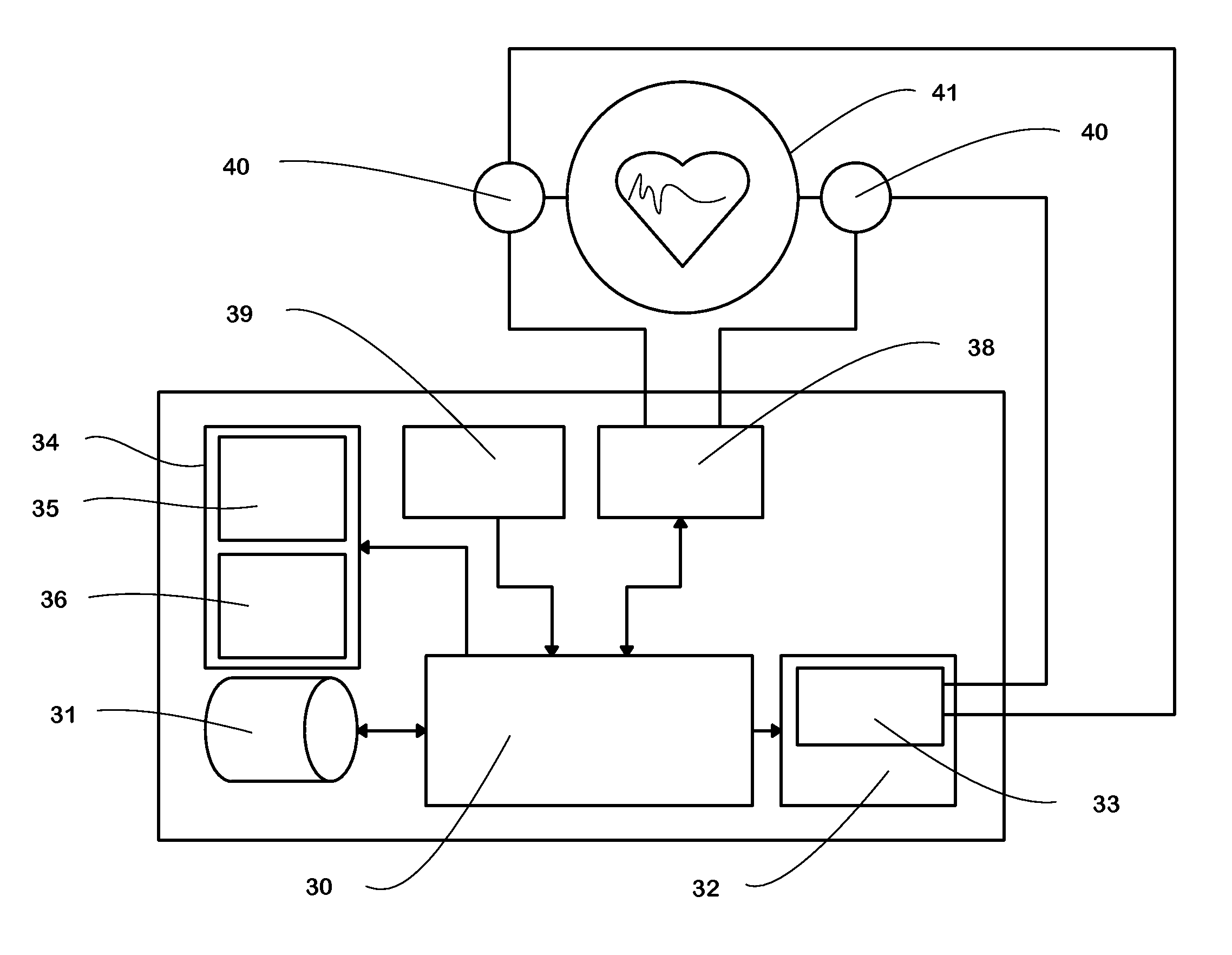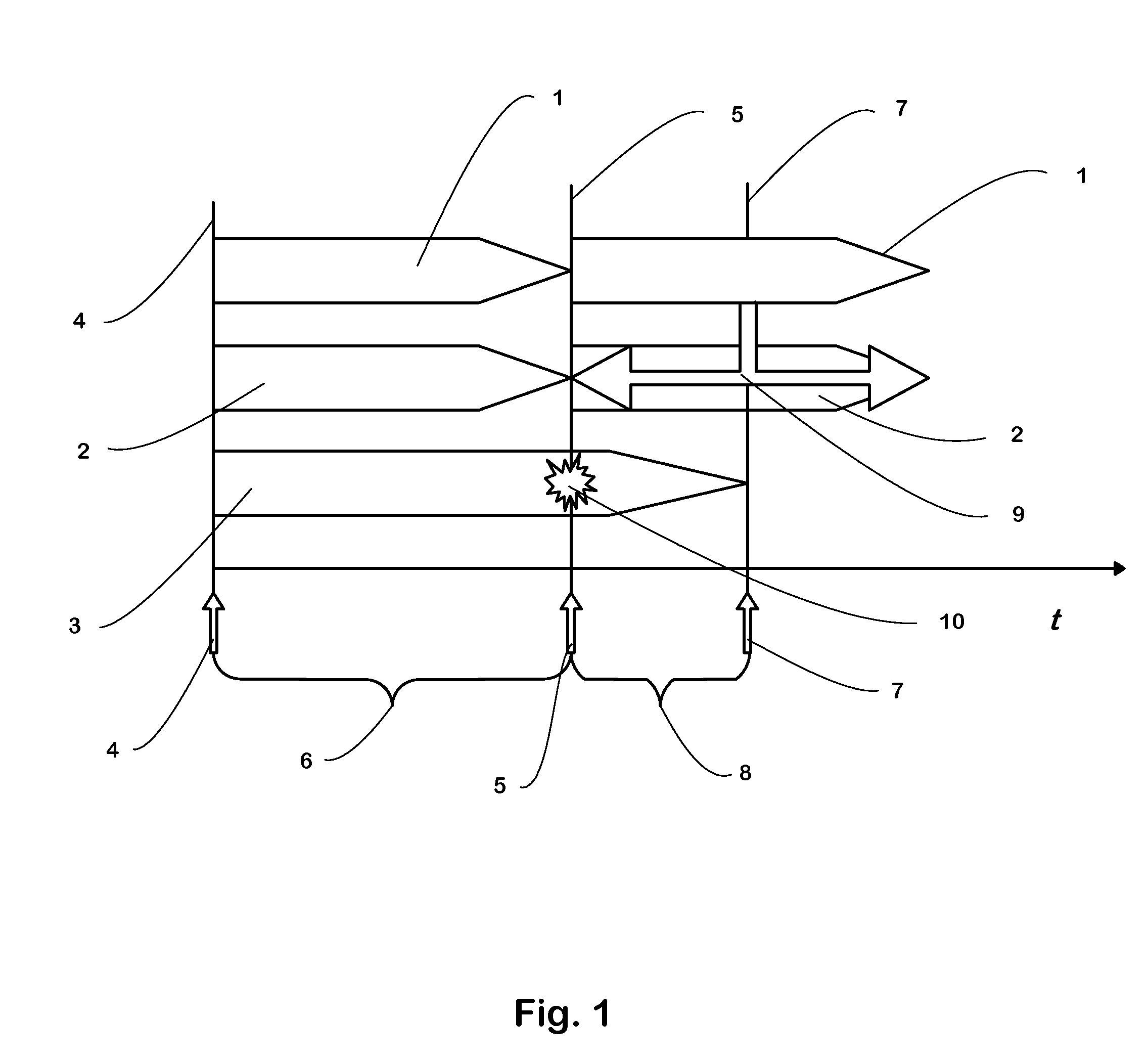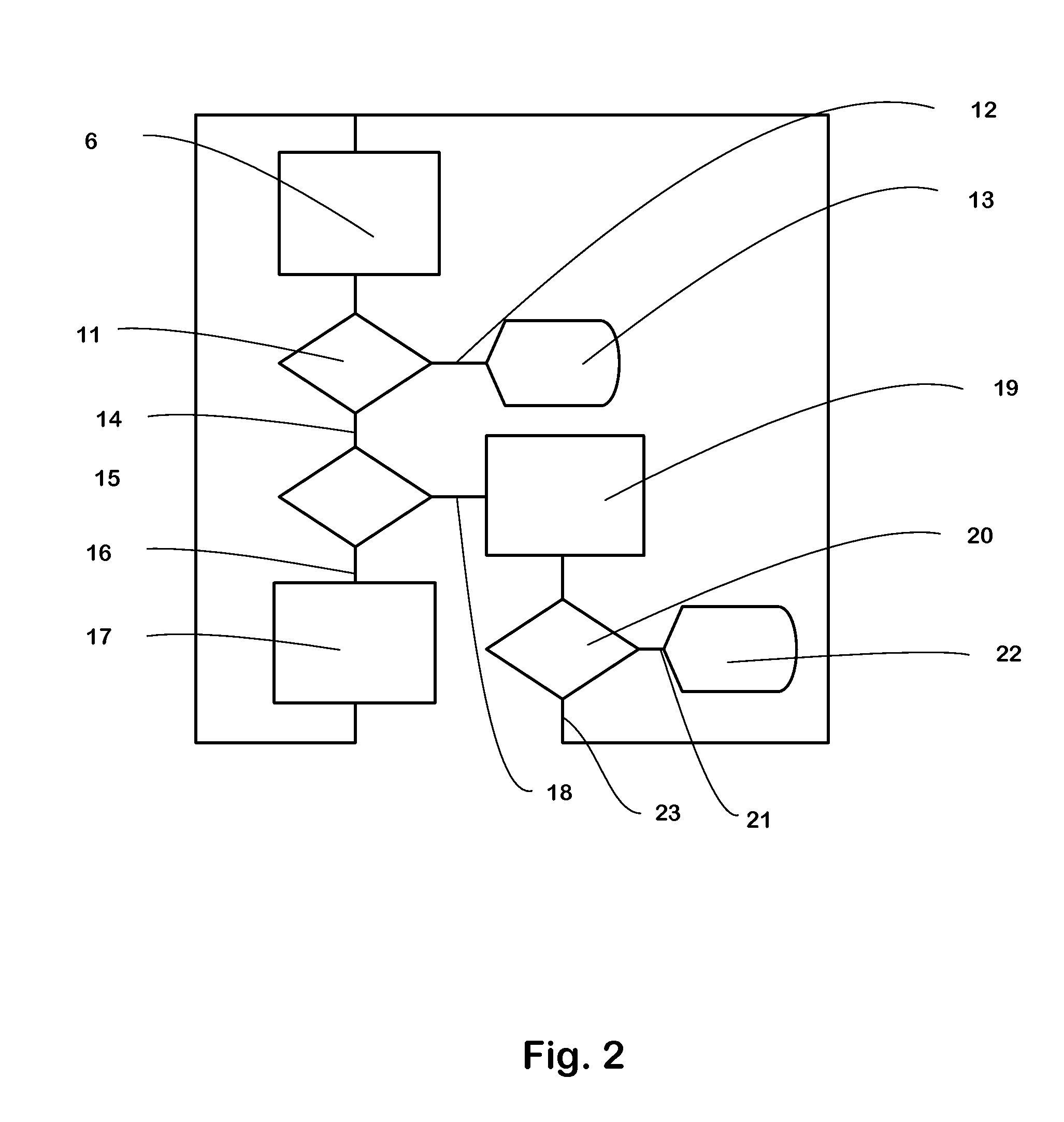Method, apparatus and computer program for defibrillation delivery decision
a delivery decision and computer program technology, applied in the field of methods, apparatus and computer programs for defibrillation delivery decision, can solve the problems of high non-reproducible artefacts from patient to patient or rescuer to rescuer, high noise that could impair the analysis process, and high noise from patient to patient or rescuer to patient, so as to achieve rapid and safe defibrillation delivery system and reduce time interval
- Summary
- Abstract
- Description
- Claims
- Application Information
AI Technical Summary
Benefits of technology
Problems solved by technology
Method used
Image
Examples
Embodiment Construction
[0043]FIG. 1 and FIG. 2 illustrate the procedure of the present invention. In FIG. 1 the time axis t shows the reliance on the three algorithms 1, 2&3 for defibrillation delivery decision. A first detection algorithm 1—specialised in finding shockable rhythms in presence of chest compression—is run from start of CPR 4 for the time 6 while CPR is being performed. A second detection algorithm 2—specialised in finding shockable rhythms in the absence of chest compression—can also be run from the start of CPR 4, but becomes relevant for defibrillation delivery decision only once a detected end of CPR 7 has been detected by a chest compression analysis algorithm 3. The analysis for shockable rhythms proceeds with the algorithm 2, retroactively treating the data collected during the interval 8 between actual cessation of chest compression 5 and detection of end of chest compression 7 with algorithm 3. Furthermore, information provided by the first algorithm 1 during the CPR time 6 is cons...
PUM
 Login to View More
Login to View More Abstract
Description
Claims
Application Information
 Login to View More
Login to View More - R&D
- Intellectual Property
- Life Sciences
- Materials
- Tech Scout
- Unparalleled Data Quality
- Higher Quality Content
- 60% Fewer Hallucinations
Browse by: Latest US Patents, China's latest patents, Technical Efficacy Thesaurus, Application Domain, Technology Topic, Popular Technical Reports.
© 2025 PatSnap. All rights reserved.Legal|Privacy policy|Modern Slavery Act Transparency Statement|Sitemap|About US| Contact US: help@patsnap.com



